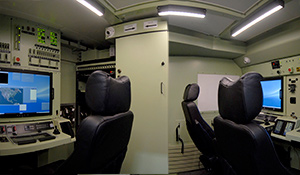
By Mr. Joshua Preusser
 Writing an article about unmanned aircraft system (UAS) airworthiness seemed a little odd at first. Like many first impressions, details were missed in that first appraisal. Such occurrences seem to be a recurring theme with UAS. Anyone with aviation experience will likely see them as an aircraft – and not all that different from a manned aircraft given they rely on the same underlying physics.
Writing an article about unmanned aircraft system (UAS) airworthiness seemed a little odd at first. Like many first impressions, details were missed in that first appraisal. Such occurrences seem to be a recurring theme with UAS. Anyone with aviation experience will likely see them as an aircraft – and not all that different from a manned aircraft given they rely on the same underlying physics.
However, airworthiness for unmanned aircraft isn’t as simple as taking manned aircraft airworthiness standards and applying them to unmanned aircraft (UA). Within the Army and industry, we’re still learning the differences and similarities between manned and unmanned aircraft and the implications of those differences. Manned aircraft have over a century of learning what does and doesn’t work. Unmanned aircraft do not have that history.
From the experience of manned flight, there are many standards that have been written capturing lessons learned and are easily applied to UAS (a wing will always be a wing, and salt fog will always corrode the same materials). Others aren’t as clear cut. In fact there are some instances where following a standard as written for a manned aircraft can cause problems when directly applied to UAS. In those cases the underlying intent of the standard needs to be examined.
This need was very apparent in a recently completed effort for standardizing the behavior of ground control station (GCS) hotkeys. While this effort included hotkeys for controlling several different types of control activation and selections, it was the “simple” on/off switch that turned out to be the most complicated case. In a manned aircraft, turning something on or off can literally be as simple as flipping a switch. However, in a UA, it is more akin to playing a game of telephone requesting the action be done. That being the case, there was significant effort involved as standards written from the experience of manned aircraft tend to assume there is some form of physical connection between the control and the item being controlled. In contrast, a UAS tends to operate far from its GCS so there is no physical connection on which to rely, and the ability of a command to definitively reach the aircraft (and the feedback to be provided in return) requires designing the system appropriately. During that effort, understanding that the standards were intended to supply the operator with timely, accurate and meaningful information was key in determining how to handle the potential for corrupted, dropped (lost), or delayed commands without giving inaccurate, meaningless or outdated information to the operator.
While that was but a single case applied to a single GCS controlling a single UA, the same process applies when dealing with more complicated interactions – and there are many more complicated interactions when dealing with UAS. In fact, some of these interactions are rarely or completely unseen in the world of manned aviation. A couple of examples of such capabilities are: having a single flight crew operate multiple aircraft or having the ability to allow remote control of the payload and aircraft by individuals removed from both the aircraft and flight crew. Then there is even the basic ability of handover of an aircraft in flight from one GCS to another GCS. While routinely done, this is something that requires special examination as the compatibility between a GCS and UA can be changed by simply changing the software version on one, but not the other.
Now considering that each of these capabilities needs to be evaluated just like that “simple” on/off command, it could quickly become a large if not impossible task. This is especially true when encountering capabilities that have no equivalent in manned aviation. Fortunately many of these capabilities can be broken down to common basic concepts. Then, after breaking them down into common actions, we can begin to examine ways of performing them in a safe and airworthy manner. As part of working on some of these capabilities, we’ve learned that not only do the manned aviation standards need to be well understood, but that some answers for UAS require going beyond existing aviation standards.
Not only are airworthiness and solid systems engineering processes inherently intertwined, but that UAS are indeed aircraft, albeit unique aircraft.
Mr. Joshua Preusser is the lead AED engineer supporting the Product Manager, Common Systems Integration (PM, CSI). He is located at Redstone Arsenal, AL.
Caption: S280 Ground Control Station / COURTESY OF PM UAS








